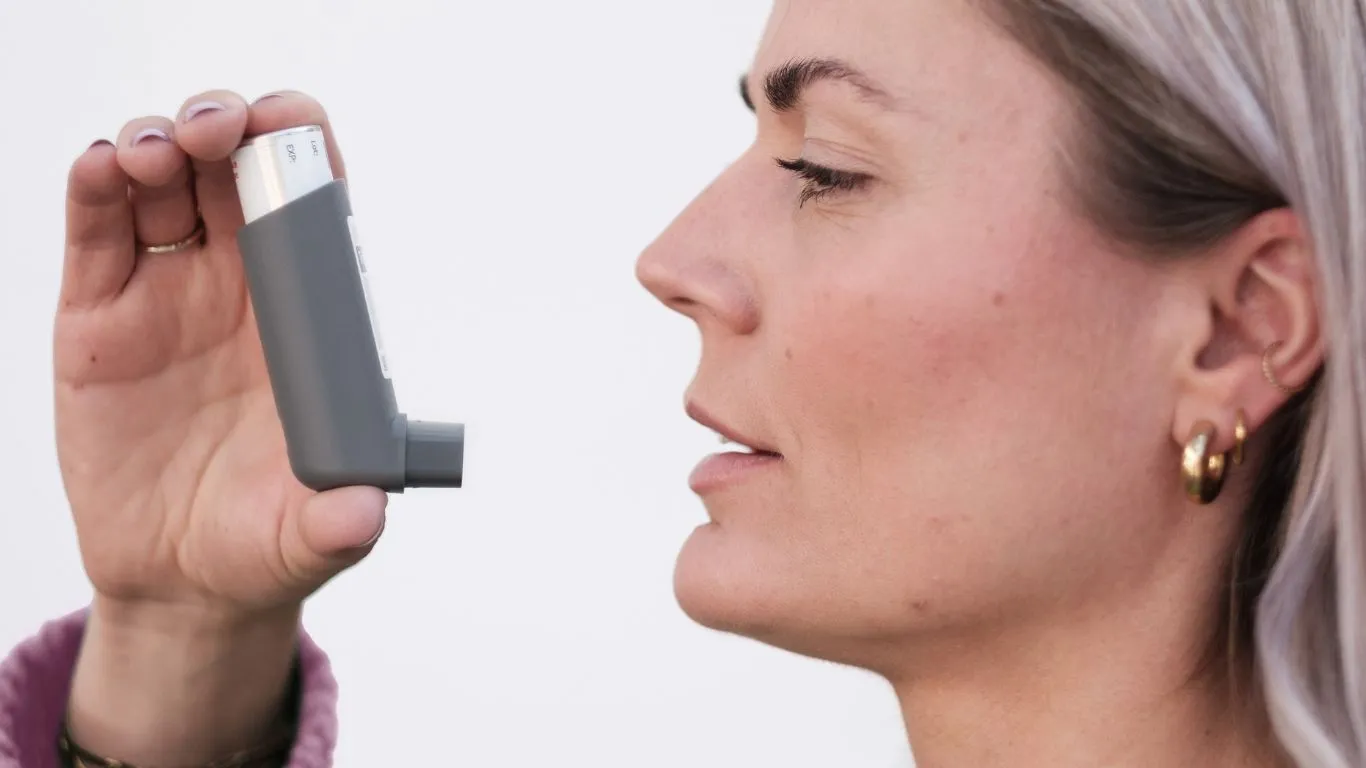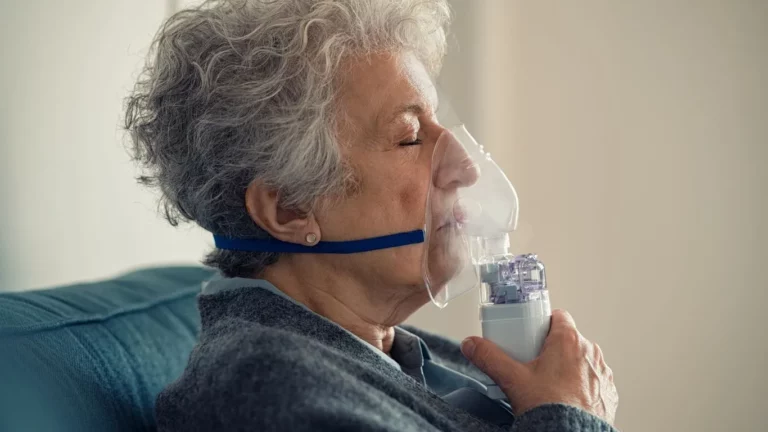Can Asthma Worsen at High Altitude? Shocking Truth You Must Know
Ever wonder can asthma worsen at high altitude? I get this question all the time, especially from folks planning a mountain vacation or even moving to a higher elevation. As a pulmonary nurse practitioner, I’ve had my fair share of patients who felt completely fine at sea level—but then found themselves short of breath, wheezing, or even needing their rescue inhaler more often just a few days into their high-altitude adventure. It’s not just in your head; high altitudes really can throw a wrench into asthma management, and I’ve seen it up close more times than I can count.
What Happens to the Lungs at High Altitude?

Let’s get into the nitty-gritty of why high altitudes can be tricky for people with asthma. Basically, the higher you go, the thinner the air gets—meaning less oxygen per breath. That’s challenging for any lungs, but if you’ve got asthma, your airways are already sensitive and potentially inflamed. So when oxygen levels drop and the air is cooler and drier (like it often is at high elevations), it can irritate the lungs even more.
I remember one patient, a 32-year-old avid hiker with mild intermittent asthma. She went on a weekend trip to Colorado, didn’t think twice about her condition, and ended up calling me from her hotel room because she was coughing nonstop and couldn’t catch her breath. She hadn’t had an asthma flare in months. That’s how fast altitude can stir things up.
Here’s why it happens:
- Low oxygen levels: Can trigger bronchospasm in sensitive lungs.
- Cold, dry air: Common at high altitudes and a known asthma trigger.
- Physical exertion: Climbing or even walking uphill uses more oxygen, putting extra demand on your lungs.
Can Asthma Worsen at High Altitude? Spoiler: Yes, It Can

So yes, let’s answer the big one: can asthma worsen at high altitude? Absolutely. Not for everyone, and not always severely, but it’s definitely a risk. Based on what I’ve seen in practice, it often depends on a few key factors:
- How well-controlled your asthma is to begin with – If you’re skipping your controller meds or only using your rescue inhaler when you feel like it, altitude is not going to be kind.
- How quickly you ascend – Flying or driving up too fast doesn’t give your lungs much time to adjust.
- Your body’s individual response – Some people are just more sensitive to changes in air pressure and oxygen than others.
What really surprises people is that even healthy lungs have to work harder up there. When you throw in reactive airways, it just adds to the burden. I had a teenage athlete with exercise-induced asthma once tell me he felt like he was “running with a plastic bag over his face” during a soccer tournament in the Rockies. Not exactly what you want when you’re trying to compete.
Signs Your Asthma Might Be Reacting to High Altitude:
- Increased shortness of breath, even at rest
- More frequent use of your rescue inhaler
- Waking up coughing or wheezing at night
- Chest tightness that doesn’t improve with usual meds
These symptoms might not scream emergency at first, but they’re red flags your asthma isn’t playing nice with the elevation. I always tell my patients, “Your body whispers before it screams.” Don’t ignore those whispers.
Who’s Most at Risk When Climbing Higher?

Not all asthmatics are affected the same way by altitude. Some barely notice it, others can barely get through a day without wheezing. From my experience, these are the folks I get most concerned about when they tell me they’re heading for the mountains:
- Children – Their airways are smaller and more reactive.
- Older adults – Especially if they have overlapping conditions like COPD or heart issues.
- People with poorly controlled asthma – If you’re already struggling at sea level, high altitude is going to magnify that.
- Individuals with a history of frequent exacerbations – Especially in response to cold or dry air.
One of the scariest calls I got was from a dad whose 7-year-old had his first major asthma attack while skiing in Utah. He didn’t even know his son had asthma until then. Turns out the altitude, cold air, and excitement triggered it all at once. Thankfully, they got to a local ER fast, but it was a wake-up call.
How to Prepare If You’re Traveling with Asthma

Okay, so you’re not canceling your mountain getaway—good! I wouldn’t either. But planning ahead is key. I always tell my patients that going to high altitude with asthma doesn’t have to be scary… as long as you pack your brain along with your bags. Here’s what I recommend to every asthmatic heading to higher elevation:
- Make sure your asthma is well-controlled before you go. This means using your controller medications exactly as prescribed and making sure your symptoms are minimal at baseline. If you’ve been wheezing just walking to the mailbox, it’s probably not the right time to test yourself at 9,000 feet.
- Pack more than you think you’ll need. Bring your rescue inhaler, your controller inhalers, spacers, and a peak flow meter if you use one. And don’t forget to pack meds in your carry-on, not checked luggage.
- Ask your provider about a written asthma action plan. It sounds fancy, but really, it’s just a clear set of steps for what to do if symptoms start flaring—super handy when you’re not near your usual clinic.
I had a patient who went hiking in Banff last summer. She followed her action plan to the letter when she started feeling tightness in her chest. She upped her inhaler use early, rested more, and avoided a full-blown attack. It works if you use it!
Tips for Adjusting to High Altitude with Asthma

So you’ve made it to your high-altitude destination, and now you’re feeling a little winded walking up the hotel stairs. Don’t panic. That might be normal adjustment, or it could be your asthma acting up. Here’s how to tell the difference—and how to adapt:
Give your body time to adjust
Altitude sickness can mimic asthma symptoms, but in asthmatics, it’s a double whammy. The rule of thumb? Take it easy for the first 24–48 hours. Don’t go hiking a summit on day one. Let your body—and your lungs—settle in.
Hydrate like crazy
The air at high elevations is bone dry. That dryness is a known trigger for many asthma sufferers, so staying hydrated helps keep your airways moist and a bit more tolerant. Hot herbal teas and even saline nasal sprays help, too.
Layer up and breathe through a scarf if it’s cold
Cold air tightens airways, especially in asthmatics. If you’re outside, wear a scarf or buff over your nose and mouth to warm the air a bit. I always tell parents of kids with asthma to treat scarves like part of their gear—just like gloves and hats.
What to Watch for: When Symptoms Go Beyond “Normal”

We’ve talked about prevention, but let’s be real—sometimes symptoms show up anyway. The big question then becomes: Is this just altitude adjustment, or is my asthma getting worse? There’s a fine line, and it’s easy to miss until it turns into a big problem.
Red flags to keep on your radar:
- Worsening shortness of breath that doesn’t improve with rest
- Needing your rescue inhaler more than every 4 hours
- Wheezing or chest tightness that wakes you up at night
- Persistent cough that won’t let up even indoors
- Peak flow numbers consistently below 80% of personal best
One of my patients—a marathon runner, mind you—ended up in urgent care because he brushed off worsening symptoms during a ski trip in Tahoe. He thought it was just being out of shape or “thin air.” By the time he realized it was a true asthma exacerbation, he was already in full distress. Don’t wait that long.
Have a game plan
If symptoms worsen, don’t just tough it out. Start with your action plan—usually that means increasing rescue inhaler use and resting. If there’s no improvement after a few puffs, it’s time to seek help. Most high-altitude towns have urgent care centers familiar with altitude-related breathing issues. They’ve seen it all.
Also, let someone know where you’re going and when you expect to be back if you’re hiking or skiing alone. I know it sounds overly cautious, but I’ve seen too many people underestimate their symptoms and end up in trouble. Better safe than sorry, right?
Can Asthma Actually Improve at Altitude?

Here’s something that might surprise you: not everyone’s asthma gets worse at high altitude. In fact, I’ve had patients who swear their breathing improved in the mountains. So what’s going on there?
Well, altitude means less pollen, fewer dust mites, and lower air pollution levels—especially compared to city living. So for those whose asthma is mostly triggered by environmental allergens, being at a higher elevation might actually bring relief.
One patient of mine with allergic asthma told me she felt like she could breathe “clean air” for the first time in years during her stay in Santa Fe. Her peak flow readings were even better than usual. Of course, the minute she came back to her moldy basement apartment, things changed fast—but still, it’s a fascinating phenomenon.
The takeaway here? Everyone’s asthma is a little different. That’s why I always emphasize knowing your personal triggers and patterns. It makes all the difference when planning travel—or even considering relocation to a high-altitude area.
Living at High Altitude with Asthma: Long-Term Considerations

So maybe it’s not just a vacation—you’re thinking about moving to Denver, Flagstaff, or maybe even a cabin in the Rockies. Beautiful idea. But one of the most common concerns I hear in clinic is: can asthma worsen at high altitude long-term? And honestly, the answer isn’t so black-and-white.
Some of my patients who relocated to higher elevations found that their asthma became more stable over time, especially once their bodies acclimated and they fine-tuned their routines. Others, especially those with more severe or brittle asthma, found it too unpredictable and eventually returned to lower altitudes.
There are a few things I always recommend considering if you’re planning a permanent move:
- Spend a few weeks there first. Don’t base a life decision on a weekend trip. Monitor your symptoms, peak flow, and energy levels over a couple of weeks.
- Establish care locally. Find a local pulmonologist or asthma/allergy specialist who understands the altitude dynamics.
- Adjust your asthma action plan. What works at sea level may not be ideal for life at 7,000 feet. You might need med tweaks or more frequent monitoring.
One of my patients, a retired Navy vet with moderate asthma, moved to Santa Fe and now swears by the dry air. But he also invested in a humidifier, sticks to his daily inhalers religiously, and checks his peak flow every morning. It’s all about balance and awareness.
Smart Lifestyle Tweaks to Stay Ahead of Asthma at Altitude

If you’re committed to staying up high, whether part-time or full-time, some simple habits can make a huge difference. Over the years, I’ve collected little lifestyle hacks from my patients that really do help.
Here are some game-changers:
- Use a humidifier in your home. The air is dry year-round at elevation. Adding some moisture indoors can reduce airway irritation and make a real impact.
- Stay consistent with your meds. Altitude isn’t the time to skip doses. Keep your maintenance inhalers part of your daily routine—even if you feel okay.
- Be altitude-aware with exercise. Start slow. Let your lungs adjust. And definitely pre-treat with a bronchodilator if you’re prone to exercise-induced symptoms.
- Track your trends. Keep a symptom journal or use a digital asthma app. Seeing patterns can help you and your provider adjust treatment if needed.
I can’t stress this enough—I’ve seen patients avoid ER visits just by recognizing subtle patterns and acting early. The goal is proactive management, not reactive rescue.
What to Discuss with Your Provider Before a Trip or Move
Before you hit the road or start house-hunting at elevation, make sure to check in with your provider. I’ve had dozens of pre-travel consults where we caught small issues before they became major ones.
Things to go over:
- Your latest asthma control score or peak flow trends
- Medication review – make sure you’re stocked and not near expiration
- Written asthma action plan updates tailored to altitude exposure
- Whether you need a short course of oral steroids “just in case”
I’ve even written letters for patients traveling with nebulizers or extra medications in case TSA asks questions. It’s all part of making sure you’re set up for success wherever you’re headed.
Final Thoughts: You Know Your Body Best
At the end of the day, no article—no matter how many years of clinical experience back it—knows your asthma better than you do. If something feels off, trust that feeling. High altitude can be magical, but it also demands a little more lung awareness and self-care.
And remember, you’re not alone. Whether you’re talking to your provider, checking in with a support group, or just doing your own research (like you are right now!), you’re already taking smart steps to stay healthy.
That’s what I love most about working with asthma patients. The more you learn, the more empowered you become—and that makes my job a lot easier (and more rewarding, too).
References
Disclaimer
This article is for informational purposes only and is not a substitute for professional medical advice, diagnosis, or treatment. Always seek the guidance of your healthcare provider with any questions you may have regarding a medical condition. The information shared here is based on general clinical experience and current guidelines but may not apply to every individual case.

Bianca Nala is a compassionate Nurse Practitioner with a strong background in primary and respiratory care. As a health writer for Healthusias.com, she combines her clinical expertise with a talent for clear, relatable storytelling to help readers better understand their health. Bianca focuses on topics like asthma, COPD, chronic cough, and overall lung health, aiming to simplify complex medical topics without losing accuracy. Whether she’s treating patients or writing articles, Bianca is driven by a single goal: making quality healthcare knowledge accessible to everyone.





